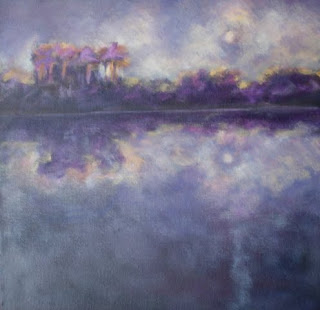
Hunter's Moon
12x12
If you were up early and outside this morning I hope you took a moment to look up into an absolutely dazzling morning sky. The stars were gorgeous, bright and twinkling. Brightest planet Venus was clear in the low eastern sky and the constellations were perfectly outlined above.
A good way to tell if you are seeing a planet or a star is that stars twinkle and planets do not.
According to Night Sky Info, twinkling of stars, technically known as stellar scintillation, is caused by the Earth's atmosphere. Because stars are so incredibly distant from us, any disturbances in the atmosphere will bounce around the light from a star in different directions. This causes the star's image to change slightly in brightness and position, hence "twinkle".
According to Night Sky Info, twinkling of stars, technically known as stellar scintillation, is caused by the Earth's atmosphere. Because stars are so incredibly distant from us, any disturbances in the atmosphere will bounce around the light from a star in different directions. This causes the star's image to change slightly in brightness and position, hence "twinkle".
There's some great stories about twinkling stars here or you can enjoy this wonderful Starry Night presentation of Van Gogh's paintings. Thanks for sharing it, Carolyn!
No comments:
Post a Comment